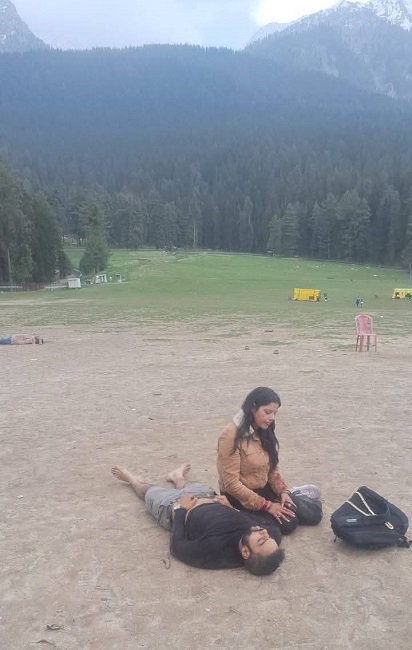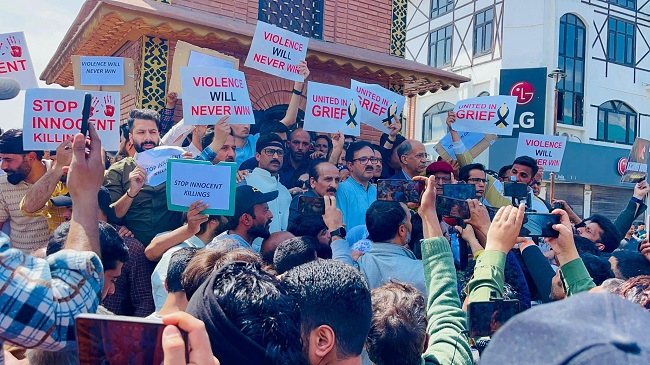By Ravisankar K.V.
My journey with Kashmir began in 1989—as a curious traveller enchanted by snow-capped peaks, serene lakes, and the cultural mystique of the Valley. Back then, Kashmir stood shoulder to shoulder with the iconic Golden Triangle (Delhi–Agra–Jaipur), proudly claiming its place as one of India’s most cherished travel destinations.
Indian tourism at the time was a limited canvas—stretched between a few key destinations in the north and pockets like Mumbai, Goa, and Kovalam in the south. International travellers often chose Kashmir alongside the Golden Triangle as a must-visit destination. Goa and Kerala were playgrounds for backpackers and the offbeat crowd. Kashmir, however, was the crown jewel.
But that glitter faded quickly.
The 1990s brought turbulence—terrorist attacks, political unrest, and the eventual disintegration of Kashmir’s status as a peaceful travel destination. My return to the Valley in 1993, not as a tourist but as a photojournalist, showed me a changed landscape—armed soldiers patrolling every corner, a land caught in the grip of uncertainty. The Kargil War in the late ’90s further deepened the chasm, and for nearly two decades, Kashmir’s tourism industry bled quietly as many of its stakeholders abandoned ship, migrating to friendlier shores like Goa and Kerala.
Ironically, the loss of Kashmir became the gain of Kerala and Rajasthan, both of which surged ahead with aggressive tourism campaigns. Kerala’s “God’s Own Country” rebranding was a masterstroke, and other states followed suit. Kashmir, meanwhile, became synonymous with danger.
But then came 2019—a bold political move with the abrogation of Article 370, aiming to integrate Jammu and Kashmir more closely with the Indian Union. Coupled with increased security vigilance and consistent marketing by the J&K Tourism Department, signs of revival began to show. Domestic travel fairs, sustained outreach, and support from trade associations like TAAI and IATO began to bear fruit.


I witnessed this turnaround firsthand during my third visit in 2018 for the TAAI Convention in Srinagar. The Sher-i-Kashmir International Conference Centre (SKICC) buzzed with optimism, and the Valley was once again being marketed with confidence. Post-COVID, India’s changing travel psyche—rooted in “Explore India First”—gave Kashmir another push. Remarkably, Kerala’s Kozhikode and Malappuram districts emerged as major source markets for Kashmir tourism.
By 2024, a staggering 23 million tourists had visited Jammu and Kashmir. The narrative was finally changing.
But terrorism has its own cruel timing.


The April 22, 2025 terror attack in Pahalgam, a brutal assault on unarmed tourists enjoying the natural splendor of South Kashmir, is a devastating blow—not only to lives but to livelihoods, hopes, and the fragile perception of “normalcy.” Among the victims were newlywed Navy officer Vinay Narwal and two foreign nationals. The attack was not just a strike on individuals—it was an assault on an entire economy and the idea of peace itself.
Videos of panicked survivors went viral, shaking public confidence. Cancelled bookings began trickling in. The attack, tragically, came at the very height of tourist season and just ahead of the annual Amarnath Yatra. Pahalgam, which serves as a base camp for the pilgrimage and is adored by trekkers and sightseers alike, was hit where it hurt the most.
The industry responded swiftly and solemnly. A Valley-wide shutdown on May 23rd, led by political parties, business bodies like the Kashmir Traders and Manufacturers Association, and local communities, was more than just a protest—it was a collective mourning and an urgent call for peace. Respected voices, from Lieutenant Governor Manoj Sinha to grassroots citizens, denounced the violence and highlighted the irreplaceable role tourism plays in restoring Kashmir’s economic and emotional equilibrium.
Tourism is more than a barometer of economic activity in Kashmir. It is oxygen for thousands of families, from hotel owners to pony riders, artisans to adventure guides. The Pahalgam attack has endangered not just lives, but an entire ecosystem trying to heal from decades of trauma.
The ripple effect is already being felt. Stakeholders, such as Rauf Tramboo of the Travel Agents Association of Kashmir, report cancellations and growing fears. And while security agencies have launched massive combing operations in Anantnag and the Baisaran region, the damage—in perception and business—may take months to undo.
Mr. Inderjit Khajuria, Chairman of the All Jammu Hotels and Lodges Association, stated that the Pahalgam attack could negatively affect the upcoming Amarnath Yatra.


But Kashmir has proven one thing time and again—it is resilient.
It has bounced back from wars, floods, lockdowns, and pandemics. It has endured despite being caught between geopolitical crossfires. And if the industry, government, and citizens come together with empathy and strategy, Kashmir can—and will—rise again.
We must not allow the actions of a few to dictate the future of many. What’s needed now is collective courage, stronger communication from tourism authorities, real-time support for those affected, and renewed assurances of safety and stability.
The Valley is watching. The world is watching. Let’s ensure that the next chapter of Kashmir’s story is not one of tragedy, but of triumphant transformation.
so Read
Tourism Poised to Smash Records in 2024: WTTC
Watch on Youtube
